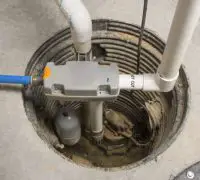The Federal Republic of Germany has initiated the world’s most ambitious national solid waste policy, one that already has had international repercussions. The Ordinance on the Avoidance of Packaging Waste (Verpackungsverordnung), passed in 1991, makes industry responsible for its packages to the end of their life cycles, including the costs of collecting, sorting, and recycling packages after consumers discard them. The ordinance thus shifts the cost of managing packaging waste from the public sector to private industry. Similar legislation proposed in Germany would extend industry’s life-cycle responsibility to include its products as well as packages, starting with automobiles, electric and electronic equipment, newspapers, and batteries. Germany has, in effect, redefined the bottom line, giving companies an incentive to consider waste management costs when they design and select materials for packages and products.
According to German Environment Minister Klaus Töpfer, the Packaging Ordinance “marks the final abandonment of the throwaway society.”
Why Look at Germany?
The United States and Germany share a problem common to many countries: a huge volume of garbage combined with public opposition to the siting of new landfills and incinerators. The number of landfills in both countries has fallen sharply in the past two decades. When the German Cabinet approved the Packaging Ordinance, the Federal Environment Ministry estimated that the former West Germany was disposing of about 32 million metric tons of municipal solid waste per year, and that disposal capacity would run out in two to five years. Packaging was targeted because it accounts for about one-third, by weight, of this waste stream.
The US municipal solid waste stream has more than doubled since 1960, partly owing to increased population and partly because the average US resident produces 4.3 pounds of garbage per day – 1.6 more pounds than 30 years ago. Germany’s approach may provide valuable lessons for US policymakers, not only as a strategy for reducing waste but as a strategy for conserving natural resources – air, water, land, energy, and raw materials.
The German legislation’s relevance to the United States goes beyond waste. US companies that sell products in Germany must comply with German laws. US companies also compete with German companies globally and need to understand the new rules under which German industry is operating. Moreover, several other countries have enacted legislation based on the German philosophy of extending industry responsibility, including France,Austria, and Belgium. Many other European countries and Canada are considering similar measures.
The “Polluter Pays” Principle
In Germany, the philosophy of making those who produce packages and products responsible for recycling and disposal is called the “polluter pays” principle. By shifting the financial responsibility for this waste from local governments to industry, Germany aims to provide industry with an incentive to make less wasteful packages and products. This new responsibility gives industry a powerful stimulus to incorporate waste management considerations into the design and materials selection processes. Although the shift effectively “internalizes” waste management costs – building them into consumer prices – it does not turn consumer product companies into garbage collectors. German waste management firms and municipalities continue to collect, sort, and dispose of garbage.
The German Packaging Ordinance
Understanding the German system in some detail is necessary if US policymakers are to learn from Germany’s initiatives. What is Germany trying to accomplish? What strategies are being used? How much do they cost? What problems and successes can be documented? Germany, Garbage, and the Green Dot addresses all of these questions. However, learning from the German approach does not mean accepting it in its entirety. Some of Germany’s policies and strategies might be effective in the United States; others might not. Thus it is helpful to look at Germany’s goals, strategies, and implementation methods separately to see which, if any, would be useful here.
The Packaging Ordinance requires that industry, not the public waste management system, take back, reuse, and/or recycle one-way packaging on the German market. It divides packaging into three categories:
1. Transport – packaging used to ship goods to retailers (e.g., crates, pallets, corrugated containers).
2. Secondary – additional packaging designed to facilitate self-service sales, to prevent theft, or to advertise and market the product (e.g., outer boxes, foils, blister packs).
3. Primary – the basic package that contains the product (e.g., soup can, jam jar, soap-powder box).
Transport packaging accounts for about one-third of Germany’s packaging waste stream, primary packaging for about two-thirds, and secondary packaging for less than 1 percent.
Provisions of the Ordinance
The Packaging Ordinance required manufacturers and distributors to take back transport packaging beginning in December 1991 and called for retailers to install bins so that customers could leave secondary packaging in the stores starting in April 1992. The ordinance also stated that, as of January 1993, customers could return primary packages to retailers and mandatory deposits would be imposed on nonrefillable containers for beverages, washing and cleansing agents, and water-based paints.
Exemption for Industry
The ordinance provided an exemption to the primary packaging regulations if industry would implement an alternative, privately financed plan that could meet specified goals for collecting and sorting packaging materials and for refilling beverage containers. The exemption was granted for an industry plan know as the “Dual System,” run by the private company Duales System Deutschland GmbH (DSD).
In order to keep its exemption, DSD must ensure that the goals for recycling glass, tinplate (steel), aluminum, paper/paperboard, plastics, and composites are met. The ordinance specifies collection and sorting quotas for these materials, and states that all sorted materials should be delivered to recyclers. Thus “implied” recycling quotas can be calculated, as shown in the following table.
At the same time, DSD must ensure that the percentage of beverages sold in refillable containers nationwide, by volume, does not decline below the average rates when the ordinance took effect – 17 percent for milk and 72 percent for all other beverages.
The Dual System
The Dual System operates in conjunction with the existing municipal solid waste management structure in Germany. Consumer product manufacturers pay fees to DSD to place its trademark “green dot” on their packages. This symbol is intended to represent a recycling guarantee, for DSD then collects and sorts the packages consumers have discarded and directs them to recyclers. As long as the ordinance’s collecting, sorting, and refilling quotas are met, retailers do not have to “take back” primary packages and consumers do not have to pay high mandated deposits on nonrefillable containers. Packaging waste is collected curbside in DSD bins or in municipal bins placed around neighborhoods for glass and paper.
Impact of the Legislation
Although the Packaging Ordinance was not fully implemented until January 1993, some early indications of its impact were evident by the end of that year, when Germany, Garbage, and the Green Dot went to press. Some companies have changed their packages in direct response to the ordinance or in anticipation of its implementation. From 1991 to 1992 – a period in which the German economy was growing – packaging consumption was reduced by more than 600,000 metric tons, or about 4 percent. And the proportion of beverages sold in refillable containers actually increased.
- Development of Reusable Shipping Containers: The transport packaging regulations in the Packaging Ordinance have led to the development of new reusable shipping container systems for various products. One such system is based on modular pieces, leased to manufacturers, that are expected to last 10 years. After that they can be recycled four or five times into new reusable containers.
- Secondary Packaging Dropped: The ordinance’s requirement that stores provide bins for discarding secondary packaging prompted retailers to pressure suppliers to reduce these materials. Changes made by manufacturers include eliminating outer boxes, blister packs, and wrappings. DSD claims that secondary packaging has been reduced by 80 percent.
- Reusing and Reducing Primary Packaging: The ordinance has prompted consumer product manufacturers to modify their primary packages. Changes include reducing the size of boxes, selling liquid and powdered products in concentrated form, using refill bags or bottles for cleaning products, and replacing packaging made of mixed materials with single-material packaging that is easier to recycle.
New green dot fees based on material and weight, introduced in October 1993, are expected to accelerate packaging changes by providing stronger financial incentives for companies to reduce packages’ weight and to use materials that are more cheaply and easily recycled. The green dot fee schedule, shown below, is based on DSD’s estimated collecting and sorting costs for the specified materials. The plastics fee also includes some recycling costs because DSD partially funds plastics recycling.
- Extending Responsibility for Products: Besides packaging, some manufacturers have also changed their products in anticipation of legislation that would apply the “polluter pays” principle to products such as automobiles and electronic equipment. Some companies in these industries are taking back some of their products voluntarily. Automakers have taken several steps to make cars more recyclable, including: designing for disassembly, reducing the number of plastic resins used, and coding plastics for rapid identification. In the electronics industry, a number of companies are trying to maximize the reuse of parts, to keep equipment running longer through refurbishing, and to design machines to be easily upgraded so that only obsolete parts must be discarded.
In short, application of the “polluter pays” principle in Germany is leading companies to think about the environment when designing and selecting materials for packages and products. German Environment Minister Töpfer predicts that, in the future, managing used products will be as important as supplying consumers with new goods.
Implementation Problems
Although the Dual System has succeeded in many ways, it has also suffered a number of setbacks. Three main problems have been that: 1.) DSD’s waste management costs far exceeded early estimates, 2.) Many companies were delinquent in paying the required green dot fees; 90 percent of the packages carried the dot but fees were paid for only 50 – 60 percent, and 3.) DSD did not have the capacity to recycle all the materials collected.
In response to DSD’s financial crises, representatives of manufacturers, the waste management industry, retailers, local authorities, DSD, and the federal government agreed, in September 1993, to a plan to save DSD that included converting DSD’s dm640 million ($384 million) debt to loans and asssuring payment of green dot fees.
The lack of adequate recycling capacity for plastics has become the Achilles heel of the Dual System. In 1993 DSD collected four times more plastics than it was required to recycle – and much more than it had the capacity to recycle. This led to stockpiling of plastics within the country and a surge in exports, provoking outcries from other European Community member states and from German critics of the Dual System. At the end of 1993 Germany’s Federal Environment Ministry was considering amendments to the Packaging Ordinance that would reduce the recycling rates and delay the time schedule for achieving them.
Some Lessons from Germany
Learning from Germany’s experience is not contingent upon the Dual System’s success. The problems it has faced arise primarily from implementation strategies, not from the basic concept of expanded manufacturer responsibility, which is sweeping Western Europe. Germany, Garbage, and the Green Dot identifies a number of questions for US policymakers to consider in light of the German initiative, including this fundamental question: How should responsibility for waste be allocated between industry and the public sector? The report also discusses various policy mechanisms – some implemented in Germany and some not – that could be employed if the United States decided to expand manufacturer responsibility for products and packages.
In the United States, legislation incorporating the concept of manufacturer responsibility has been proposed at the federal, state and local level. Senator Max Baucus (D-Montana), chairman of the Senate Environment Public Works Committee, has cited Germany as a source of his proposals to “internalize” waste management costs and shift them from the taxpayer to industry. Careful consideration of Germany’s initiative may help US policymakers develop more effective materials management policies that will permit us to live within our environmental, as well as economic, means.





